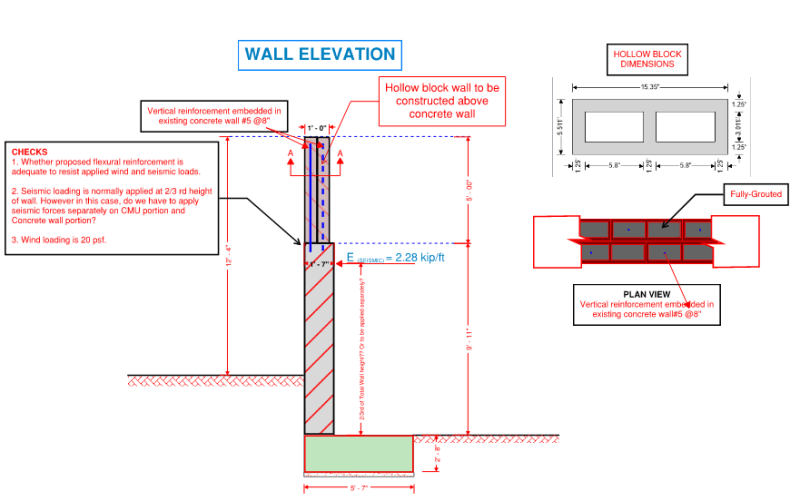Usman3301
Civil/Environmental
- Jul 11, 2019
- 48
Hi everyone,
I'm in a bit of mess currently, due to Masonry Design of Hollow blocks - fully grouted. Thing is I'll pursuing master's from abroad starting this fall and already have informed my boss that I'll be leaving office at the end of this month. While I have extensive experience in Reinforced Concrete Structures, masonry structure design is uncharted territory for me.
My boss has asked me to quickly perform calculations and prepare structural assessments to verify if the proposed masonry design is acceptable. The urgency of the situation has left me feeling overwhelmed, as I'm unsure where to even begin. Had it been a week or two, I would have brushed up Masonry Design basics and would have definitely come up with a solution.
Considering the ordeal I'm currently facing, I would be immensely grateful if someone could kindly lend me a helping hand with this task. Any guidance, resources, or expertise you can offer would be greatly appreciated.
I've shared the problem statement in PDF as well as image format.

BSc. Graduate
I'm in a bit of mess currently, due to Masonry Design of Hollow blocks - fully grouted. Thing is I'll pursuing master's from abroad starting this fall and already have informed my boss that I'll be leaving office at the end of this month. While I have extensive experience in Reinforced Concrete Structures, masonry structure design is uncharted territory for me.
My boss has asked me to quickly perform calculations and prepare structural assessments to verify if the proposed masonry design is acceptable. The urgency of the situation has left me feeling overwhelmed, as I'm unsure where to even begin. Had it been a week or two, I would have brushed up Masonry Design basics and would have definitely come up with a solution.
Considering the ordeal I'm currently facing, I would be immensely grateful if someone could kindly lend me a helping hand with this task. Any guidance, resources, or expertise you can offer would be greatly appreciated.
I've shared the problem statement in PDF as well as image format.

BSc. Graduate
